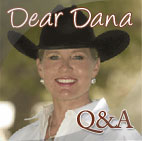Why we Train
By Sheryl Lynde | Horsetrader columnist
I’ve owned Lil’ Joe since he was four years old. Now 25, he was the catalyst for my seeking help that ultimately led to a career change
During the first years of ownership, I allowed some behaviors to go uncorrected. I wasn’t paying attention to the smaller details. He began to balk at my requests in certain circumstances, which developed into more emphatic refusals. Later, his refusals developed into crow-hopping, and the crow-hopping evolved into a buck.
Then one day I hit the ground. Once he had unseated me, every bucking episode from that day forward continued until I came off. He had my attention now.
I kept trying to ride through the behavior, but no improvement was being made. I was taking the issue with me whenever and wherever I rode. It was time to get help.
Leaning forward
A common habit that riders develop is leaning forward while riding. It evolves over time, beginning by leaning forward with the shoulders and pushing with the seat in order to urge the horse to move. The rider is compensating for the lack of leg pressure. When adopting this posture, a rider pulls their seat out of the saddle while their legs swing behind their hips, flanking the horse and forcing the toes to point down. In order to stay in the saddle, the rider grips with their knees and balances on the horse’s mouth, creating a brace throughout their upper body.
Review and resume
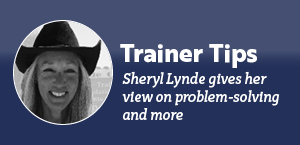 As 2018 comes to a close, I find myself reflecting on the lessons that have stood out above the others.
As 2018 comes to a close, I find myself reflecting on the lessons that have stood out above the others.
They are…
Have a goal in mind and take the steps necessary to obtain that goal. “No one who achieves any level of success does so without the help of others. The wise and confident acknowledge this help with gratitude.” Alfred North Whitehead.
Without action taken to move forward, your desire to improve will remain a day dream. I have a passion for what I do, which is starting colts and working with problem horses. Because of my passion, I continue to strive for improvement to better serve the clients and horses that come to me for help and to be a better horsewoman. I look to mentors that I respect and that have proven success in the discipline I am seeking help in.
Are you listening?
According to Wikipedia, listening is defined as a communication technique that is used in training and conflict resolution. In order to be an effective listener, you must fully concentrate, understand, respond and remember what is being said. How well do you listen?
Developing effective listening skills builds a solid foundation with benefits that filter through every aspect of your life, from professional to personal. It isn’t easy being a good listener—it takes a desire to begin with because it is a lot or work.
Understanding youngsters
 Children display individual temperaments and learning capabilities, and so do colts.
Children display individual temperaments and learning capabilities, and so do colts.
One sibling may be super chill, as nothing rattles his easygoing demeanor, while the next kid may be super sensitive, and if someone would raise their voice one octave higher, it might reduce him to tears. An older sister may be an achiever, wanting to please while respectively honoring your requests, while the younger brother may have some funk in the trunk—a “make me” attitude, annoyed at having to perform any task.
Again, it is the same with colts. I understand that I may be stating the obvious, but I meet numerous owners who become frustrated trying to use the same training approach on a different-minded colt.
Racetrack to Trail
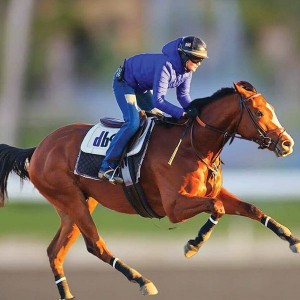 Even in the best of circumstances, there is a tremendous amount of training both on the ground and in the saddle to reeducate a race horse to a trail horse, or any new discipline.
Even in the best of circumstances, there is a tremendous amount of training both on the ground and in the saddle to reeducate a race horse to a trail horse, or any new discipline.
Each year thousands of race horses reach the end of their racing careers, either by injury, not living up to expected potential, or retirement. Many move on to be successfully retrained to excel in new careers, ranging from dressage to hunter-jumpers. However, I need to strongly emphasize that good training takes time, patience and commitment. Thoroughbreds are known for having huge hearts, and once a strong foundation is built and a trust is developed, you will find a partnership like no other.
Lucky is a 6-year-old Thoroughbred gelding that raced and won at Santa Anita and Del Mar race tracks until an injury sidelined him. Rather than choosing euthanasia, the owner was convinced by his trainer to relinquish him to an environment where he could be rehabilitated and retrained. He was delivered to a rescue where he began his long recovery process, and once his injury mended as best it could, a new home was identified and selected. Lucky was brought to me by his new owner to help him make the transition safely from track to trail.
Anatomy of learning
 Have you ever felt you are at the limit of your knowledge when trying to resolve a behavioral issue or perhaps achieving a goal or target? You may not even know what you don’t know—you just feel stuck.
Have you ever felt you are at the limit of your knowledge when trying to resolve a behavioral issue or perhaps achieving a goal or target? You may not even know what you don’t know—you just feel stuck.
This is your starting point. Listen to your intuition. This is the time for honesty. As much as we take credit for our success, just as important is acknowledging and taking responsibility for our failures. You can’t blame the horse, the person who sold you your horse, your job, the limited amount of time or finances you have to spend on your hobby, etc. We are where we are based on decisions we have made or have allowed to be made for us.
Once a bucker, always a bucker?
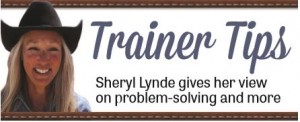 I had purchased a Paint gelding when he was four years old. At the time, I was living in Durango and I just wanted a good-minded gelding to ride in the mountains of Colorado.
I had purchased a Paint gelding when he was four years old. At the time, I was living in Durango and I just wanted a good-minded gelding to ride in the mountains of Colorado.
When I did ride him in an arena setting, I noticed getting him on his right lead was incredibly difficult. He was used in roping primarily, and when horses come out of the box, they are on their left lead in order to be in position on the cow. The more I tried, the more animated his refusals became. He showed his frustration first by crow-hopping, which eventually progressed into bucking.
Break it down. Slow it down.
 A friend called and needed help with a Peruvian Paso. Platino is a 10-year-old Peruvian gifted with a beautiful natural gait. However, his speed was uncontrollable. Lunging, working him off-line in the round pen, and galloping in the arena for extended periods of time only escalated his level of energy. He would walk alongside the handler while being led, but once a rider was seated, the race was on. Very little leg pressure was used to eliminate any possible cause for his need for speed, and the owner had had him thoroughly examined by a vet to rule out pain as the catalyst.
A friend called and needed help with a Peruvian Paso. Platino is a 10-year-old Peruvian gifted with a beautiful natural gait. However, his speed was uncontrollable. Lunging, working him off-line in the round pen, and galloping in the arena for extended periods of time only escalated his level of energy. He would walk alongside the handler while being led, but once a rider was seated, the race was on. Very little leg pressure was used to eliminate any possible cause for his need for speed, and the owner had had him thoroughly examined by a vet to rule out pain as the catalyst.
Platino arrived, and we headed for the round pen. I was aware that, physically, he was confirmed sound and fit, including a ruling out of gastric ulcers that have become so prevalent. Physically, he checked out. I moved him around a little using halter and lead rope to determine his emotional state. I didn’t find him to be overreactive, fearful or aggressive; quite the contrary, he was a gentleman. The next component that needed to be revisited was their training regimen. Since the current program wasn’t adding up to a successful outcome, a change was required in order to produce a different result.
Lack of Confidence?
 It gets to us all at some point: the feeling that maybe you don’t quite have what it takes to make it happen.
It gets to us all at some point: the feeling that maybe you don’t quite have what it takes to make it happen.
Perhaps you have just entered a competition and are excited about the challenge of bringing your horsemanship to the next level. You arrive at the show and your insides are in a twist. You can’t believe you signed up for this. You watch the other competitors warm up their horses and you feel out of your depth.
Or, maybe you are struggling to get to the next phase of your riding ability and you feel as though it is a physical impossibility. You are out of your comfort zone and easily frustrated. Your movements are awkward, and attempts to execute new habits and a different riding style have proved unsuccessful. You need to ride faster, develop a better seat, be softer with your hands, use your legs, stop leaning, watch the cow, etc. You know what you are supposed to do and what it is supposed to feel like, but you are unable to transfer your vision from your head to your hands, seat and legs in a time frame that you have set for yourself.


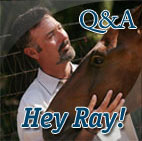
 Read Columns
Read Columns
